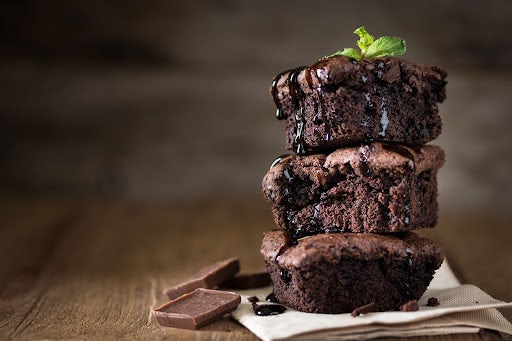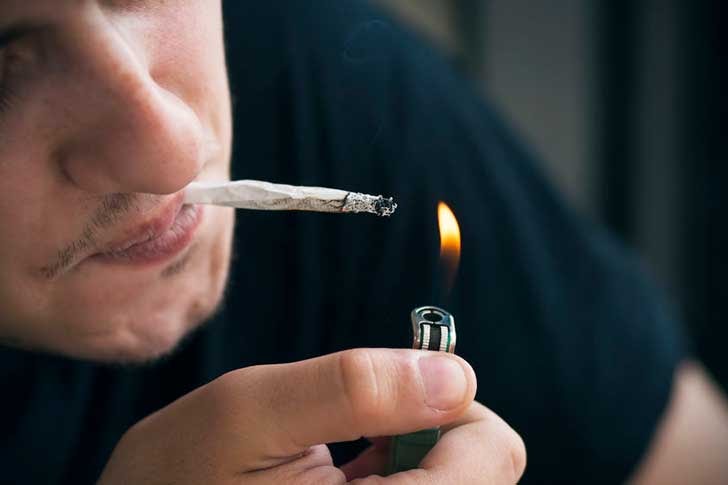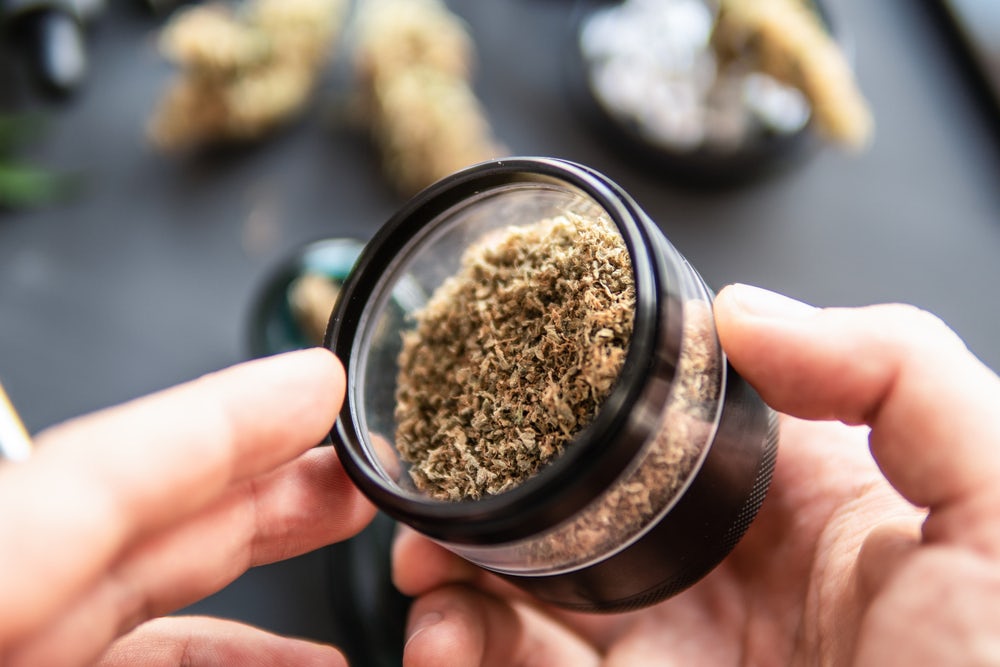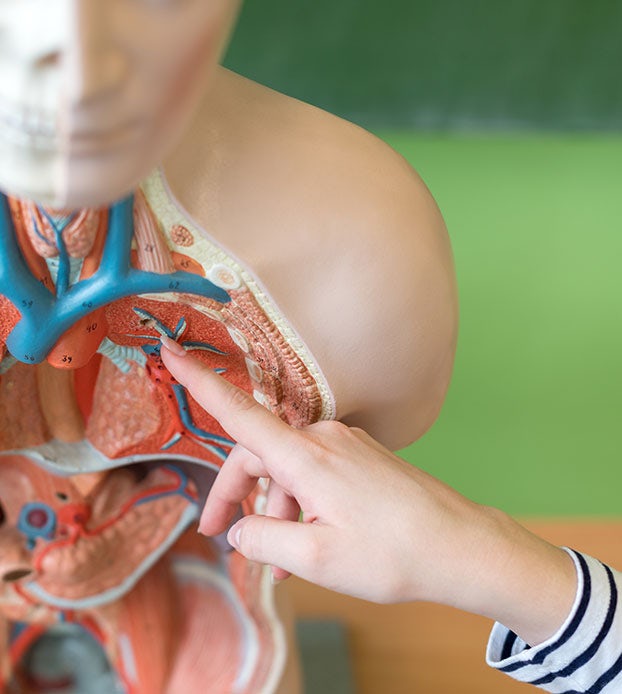Getting the most from a daily dose of medical cannabis is top of mind for many patients, especially those treating chronic conditions. A longer-lasting high translates into less time spent dosing, substantial cost savings, and most importantly, more effective treatment.
So, how do you make a weed high last longer? While stoner myths abound about this particular topic, most lists highlight questionable options like mangos and ice bongs. Although well-intentioned, these aren’t based on sound science.
Research into the onset, peak, and duration of effects from cannabis focuses on different routes of administration, tolerance breaks, and potential herbal hacks. Together, you can use these ideas to help you extend the high for more powerful and lasting results.
How long does a high normally last?
Many variables feed into the final equation of an extended high. Dose size, route of administration, tolerance level, metabolism, and more will all impact how long you feel the effects from THC-rich products.
Smoking and vaping deliver results quickly (onset between six to 10 minutes), but they rapidly peeter out. From start to finish, effects typically last for two to three hours. 1
Effects from edibles have a much longer duration, but may take well over an hour to come on. Expect effects to peak around five hours after consumption, lingering for as long as 12 hours.
Oral mucosal options, which include THC sprays and tinctures (absorbed through the lining of your mouth), sit somewhere between the two extremes of smoking versus ingesting. The consensus is that sprays and tinctures deliver a rapid onset of effects, peaking around two to four hours later.

How can I extend my high?
Want to figure out how to make a weed high last longer? You don’t need to eat more mangos or combine a joint with a beer, as some recreational resources strangely suggest. Instead, the safest way to extend the high and the medicinal effects from cannabis is likely an intelligent combination of the following:
- Choose the longest-lasting method of consumption: edibles
- Take regular tolerance breaks
- Extend effects with smoking, vaping, or other rapid onset options
- Experiment with herbs and other substances which inhibit THC breakdown
Choosing the longest-lasting route of administration
When selecting for longest-lasting effects, not all methods of consumption were created equal. For example, if you choose to eat a THC-infused edible instead of a puff from a THC vape pen, you will experience a dramatically different high duration.
Inhalable (smoking and vaping)
- Onset: 10 minutes
- Duration: Up to 3 hours
In 2009, a paper in Chemistry & Biodiversity summarized the known variables between the most popular ways to consume cannabis. 2
When it comes to smoking, most effects, as measured via blood samples, kick in within only a few minutes following an inhale. With smoking and vaping, the level of cannabinoids in the blood rises sharply, but also decreases relatively quickly. Inhalation is the shortest lasting route of administration and most experts suggest a total duration of effects of about four hours from smoking cannabis.
Edibles (infused foods, drinks, capsules)
- Onset: 30 to 90 minutes
- Duration: up to 12 Hours
For those seeking lasting relief, edibles are probably your best option. Most research suggests that the effects of edibles typically peak between two and six hours after consumption, and can last for between four to twelve hours – a rather wide time frame. 3
Taking your edibles with food is a great way to prolong the cannabis experience. By taking the edibles with fatty foods you increase absorption of the cannabinoids, slow down the onset of your edible and prolong the overall experience.
So while edibles deliver the longest high, this route of consumption has “greater unpredictability” and “significantly reduced bioavailability compared to inhalation.”

Layering effects for a longer-lasting high
For long-lasting benefits, the best route of administration is an edible. But, because the effects of edibles are often unpredictable in onset and duration, you may wish to layer in other options, like smoking or vaping, for more consistent relief.
In this scenario, always start with the edible. Once you’ve nibbled on the edible, try light dosing with a joint or a vape pen. Smoking and vaping will provide relief while you await the more powerful effects from the edible, which may take upwards of 90 minutes to hit.
After your edible has fully kicked in, at approximately the five- to six-hour mark, feel free to maintain the high by dabbling in the inhalable options again.
When done right, edibles combined with smoking or vaping may help you achieve the results you’re after. But always take it slow. Especially if you are new to THC or inexperienced in the nuances of edibles, it’s easy to overdo it with this layering technique.
Taking a tolerance break to reset the high
A tolerance break is yet another tool for improving the benefits of THC, especially for patients who rely on medical cannabis every day. The idea behind this theory is that your body has built up a tolerance to THC following frequent exposure. So, in order to ‘reset’ your tolerance level, you’ll need to go through a period of abstinence.
The scientific evidence indicates that tolerance builds up quickly, especially with daily consumption. In 2013, the National Institute on Drug Abuse (NIDA) investigated the concept of THC tolerance development among healthy, experienced male cannabis smokers dosed with oral synthetic THC for six days. 4
According to the results of this small study, participants reported feeling less high after four days and a total of 260 mg of THC. But, interestingly, their blood plasma concentrations did not decline until the 6th day. This suggests their subjective experience hit a plateau, even though their bodies were still processing the THC molecule.

As with many other areas of cannabis consumption, many variables influence how long your THC tolerance break should be. These include frequency of use, the potency of products, sex, age, and other lifestyle factors.
A 2016 paper in the Journal of Biological Psychiatry Cognitive Neuroscience and Neuroimaging looked at CB1 receptor activity as an indicator of THC tolerance. Because THC binds directly to CB1 and alters its activity, it can be a valuable tool in this regard. 5
The study determined receptor activity rapidly changes after only two days of abstinence, quickly rebounding in the direction of normal levels. After 28 days, receptor activity continued to trend toward normal, but did not return to the same level as healthy controls, though this finding was not statistically significant. In other words, the study could not make assertions about the timeframe required for the ECS to fully come back to baseline, but these results do suggest that there is a relationship between length of abstinence and receptor availability.
Herbal hacks for extending the high
Mango stoner myths aside, there may be evidence-based herbal hacks that can help slow down the way your body processes THC. Theoretically, if you can prevent your liver from breaking down THC, you can alter the effect profile of THC and even potentially make your high last longer.
What’s the best way to slow down this natural process? Our livers are the primary organ responsible for metabolizing cannabinoids like THC. The process involves enzymes, especially a class of enzymes known as cytochrome P450 (CYP450) enzymes. These enzymes are responsible for breaking down many different molecules in the body, including a wide variety of pharmaceuticals. Because of its importance for other drugs, there is actually a lot of research into what inhibits its function. 6
In general, the two major enzymes involved in THC metabolism are CYP3A4 and CYP2C9. And while 2C9 primarily produces 11-hydroxy-THC, the CYP3A4 enzyme produces other less psychoactive THC metabolites. As such, interfering with 3A4 by taking other herbal products could hypothetically alter one’s response to THC by altering how much 11-hydroxy is produced. 7
Still, there isn’t much available information about taking both cytochrome P450 3A4 inhibitors and THC, so we have to pull evidence from other relevant fields of study. According to non-cannabis research, we know that green tea, Agaricus mushrooms, mistletoe, and noni juice inhibit the function of cytochrome P450 3A4 in vitro, with green tea producing the greatest inhibition. 8

In theory, consuming a cup of green tea may inhibit CYP3A4 enzyme activity, which would slow down how fast your liver processes THC. These herbal hacks could extend the THC high, but all of these need cannabis-specific clinical study, and also all have their own unique effect in the body and brain to consider, such as the caffeine content in green tea.
Keep in mind, this enzyme is responsible for breaking down many pharmaceutical drugs, so there is significant risk of drug-drug interaction with these products and some interactions may be serious. If you are taking any other medications or over-the-counter supplements, speak with your physician or pharmacist before any self-experimentation for extending your high. Even then, this option for extending your high is not recommended as intentionally causing drug interactions is rarely a recipe for success.
Want to know how to stay high longer? Start with self-experimentation
Cannabis is a complicated plant, and so too are its effects. With so many variables influencing how cannabinoids travel through your body and how your body responds, you can’t always control how long cannabis lasts.
But if we turn to the available evidence, we know a few ways to help extend your high. Start by choosing edibles, which can last for upwards of 12 hours, especially if taken with a fatty meal. Then, layer in other methods like smoking and vaping, as needed to achieve your desired effect.
Third, take tolerance breaks every so often to help restore your sensitivity to THC’s effects. Finally, try experimenting with different herbal enzyme inhibitors, which slow down how your body processes THC.
Together, these tools offer evidence-based ways to extend the high without resorting to stoner myths and lore.
Sources
- Peter X Chen, Michael A Rogers, Opportunities and challenges in developing orally administered cannabis edibles, Current Opinion in Food Science, Volume 28, 2019, Pages 7-13, https://doi.org/10.1016/j.cofs.2019.02.005
- Huestis M. A. (2007). Human cannabinoid pharmacokinetics. Chemistry & biodiversity, 4(8), 1770–1804. https://doi.org/10.1002/cbdv.200790152
- Peter X Chen, Michael A Rogers, Opportunities and challenges in developing orally administered cannabis edibles, Current Opinion in Food Science, Volume 28, 2019, Pages 7-13, https://doi.org/10.1016/j.cofs.2019.02.005
- Gorelick, D. A., Goodwin, R. S., Schwilke, E., Schwope, D. M., Darwin, W. D., Kelly, D. L., McMahon, R. P., Liu, F., Ortemann-Renon, C., Bonnet, D., & Huestis, M. A. (2013). Tolerance to effects of high-dose oral δ9-tetrahydrocannabinol and plasma cannabinoid concentrations in male daily cannabis smokers. Journal of analytical toxicology, 37(1), 11–16. https://doi.org/10.1093/jat/bks081
- D’Souza, D. C., Cortes-Briones, J. A., Ranganathan, M., Thurnauer, H., Creatura, G., Surti, T., Planeta, B., Neumeister, A., Pittman, B., Normandin, M., Kapinos, M., Ropchan, J., Huang, Y., Carson, R. E., & Skosnik, P. D. (2016). Rapid Changes in CB1 Receptor Availability in Cannabis Dependent Males after Abstinence from Cannabis. Biological psychiatry. Cognitive neuroscience and neuroimaging, 1(1), 60–67. https://doi.org/10.1016/j.bpsc.2015.09.008
- Sharma, P., Murthy, P., & Bharath, M. M. (2012). Chemistry, metabolism, and toxicology of cannabis: clinical implications. Iranian journal of psychiatry, 7(4), 149–156.
- Huestis M. A. (2007). Human cannabinoid pharmacokinetics. Chemistry & biodiversity, 4(8), 1770–1804. https://doi.org/10.1002/cbdv.200790152
- Engdal, S., & Nilsen, O. G. (2009). In vitro inhibition of CYP3A4 by herbal remedies frequently used by cancer patients. Phytotherapy research : PTR, 23(7), 906–912. https://doi.org/10.1002/ptr.2750
Sign up for bi-weekly updates, packed full of cannabis education, recipes, and tips. Your inbox will love it.

 Shop
Shop Support
Support



















